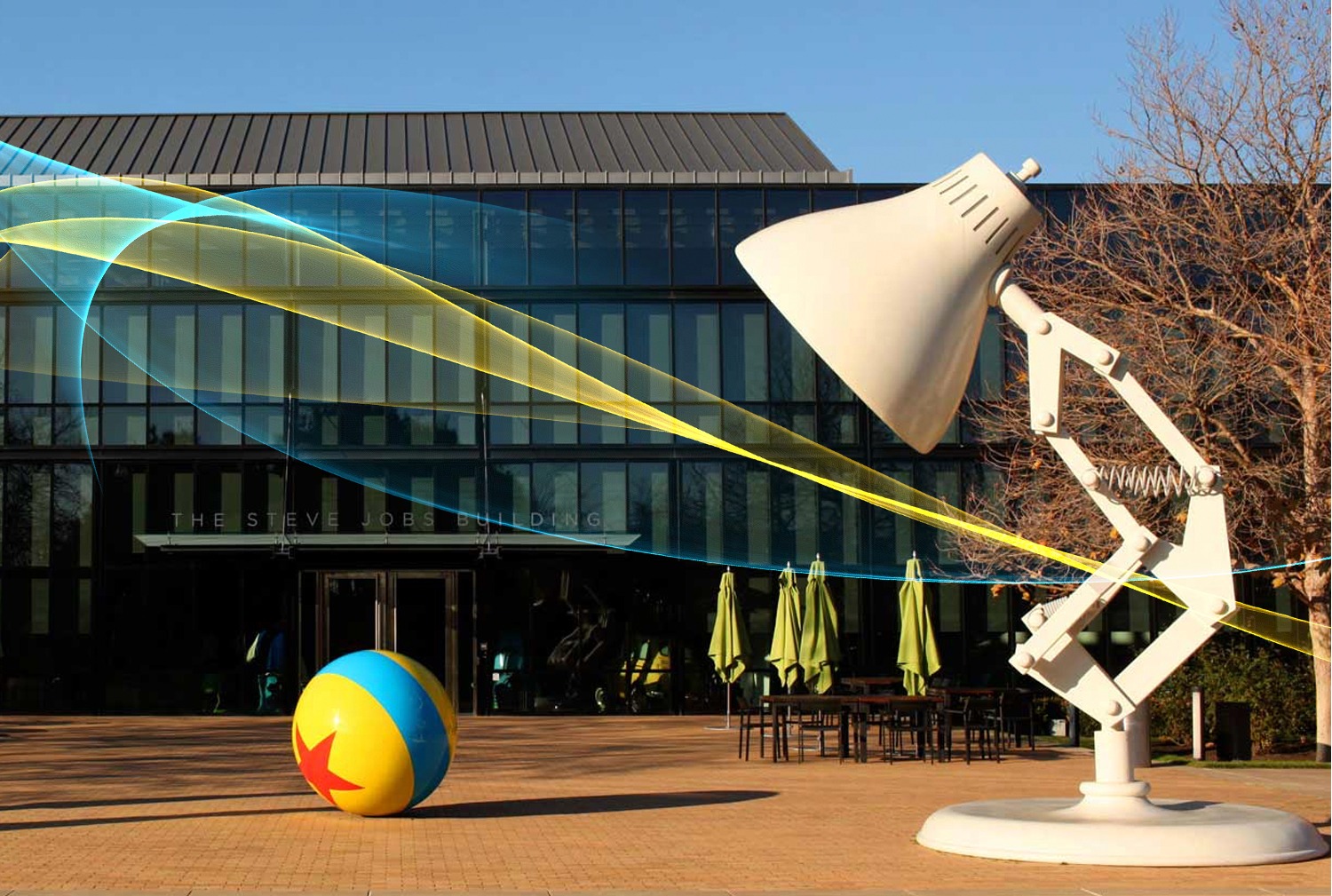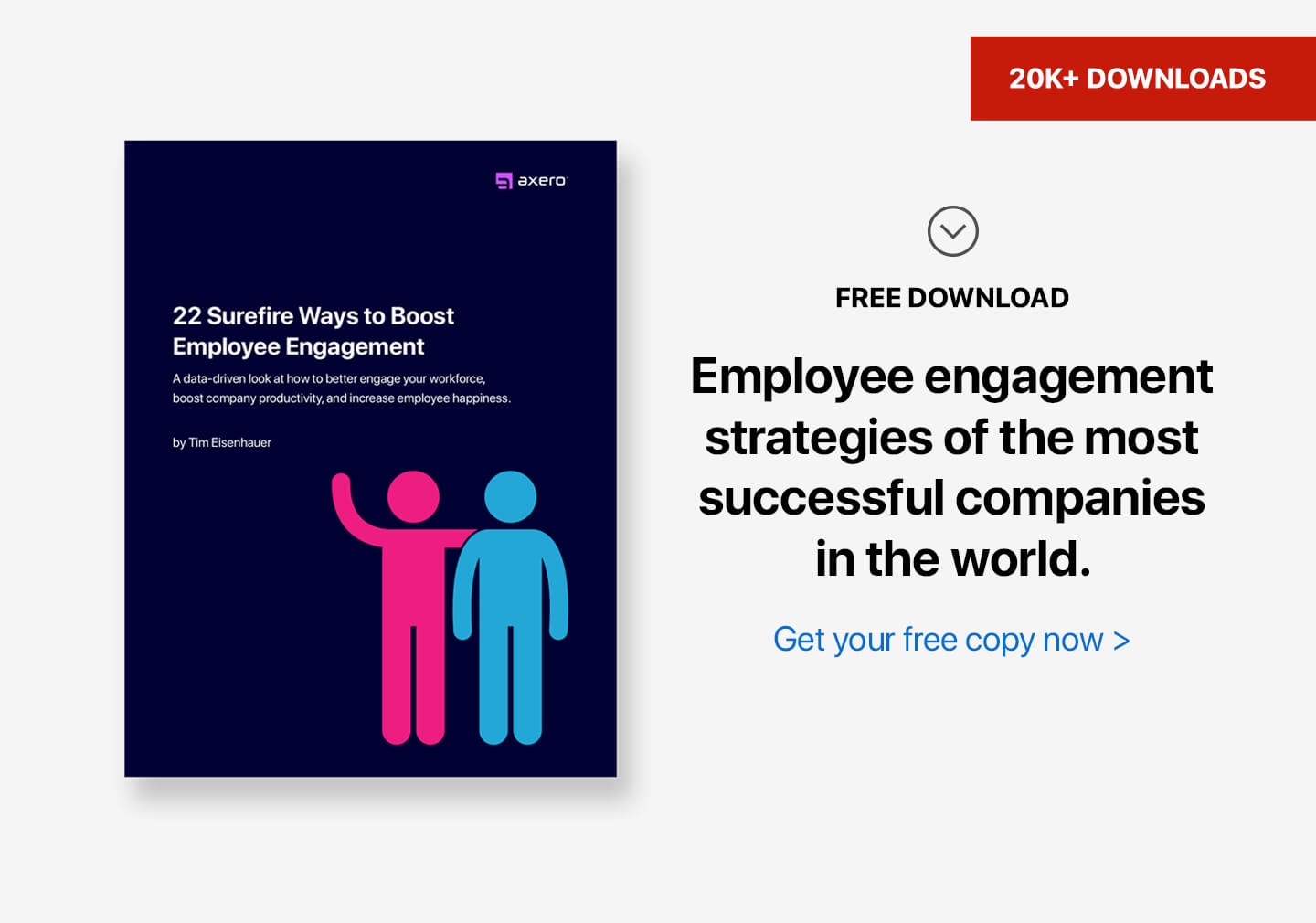It’s common knowledge that Steve Jobs had an eye and a passion for design. Circuit board design. User interface design. Computer font design… But did you know that Jobs was as obsessively picky about his office space as he was about his products?
Here’s a story about Pixar, a computer animation company Steve Jobs bought from Star Wars director George Lucas in 1986. In November 1995, Pixar produced its first hit—Toy Story. Two days after the opening weekend, Jobs took his company public, commanding a value of $1.5 billion.
With Pixar’s long struggle to survive behind him, Jobs started looking for new office space for his now rapidly-growing company. In 1997 he purchased an abandoned Del Monte canning factory in the San Francisco Bay Area. To build the new headquarters, Jobs hired Bohlin Cywinski Jackson, the architectural firm that helped design Bill Gates’ futuristic mansion—Xanadu 2.0.
“The original architectural plan called for three buildings, with separate offices for the computer scientists, animators and Pixar executives. Jobs immediately scrapped it… Instead of three buildings, there was going to be a single vast space, with an airy atrium at its center.” 1
1997 was a busy year for Jobs. Between taking over Apple and haggling with Disney, Pixar’s distribution partner, he arguably had better things to do than to micromanage a famous design house. And yet, Pixar’s president Ed Catmull insists Jobs was onto something:
“The philosophy behind this design is that it’s good to put the most important function at the heart of the building. Well, what’s our most important function? It’s the interaction of our employees. That’s why Steve put a big empty space there. He wanted to create an open area for people to always be talking to each other.” 1
Pixar grew out of the cross-breeding of art and technology. John Lasseter, the Chief Creative Officer at Pixar, put it this way: “Technology inspires art, and art challenges the technology.”1 Toy Story, the first computer-animated feature film, made Steve Jobs his first billion. Now he was looking to preserve the creative chemistry in his company and scale it up.
The active ingredient in Toy Story was the working relationship among the film’s principal creators: John Lasseter, Andrew Stanton, Pete Docter, Lee Unkrich, and Joe Ranft. In the subsequent years, Pixar conceptualized and evolved the group’s spirit into something called “Braintrust:”
During the 1990s and 2000s, Pixar gradually developed the “Pixar Braintrust,” the studio’s primary creative development process, in which all directors, writers, and lead storyboard artists at the studio look at each other’s projects on a regular basis and give each other very candid “notes” (the industry term for constructive criticism). The Braintrust operates under a philosophy of a “filmmaker-driven studio,” in which creatives help each other move their films forward through a process somewhat like peer review, as opposed to the traditional Hollywood approach of an “executive-driven studio” in which directors are micromanaged through “mandatory notes” from development executives ranking above the producers. 2
For Jobs, the new headquarters had to be more than an attractive space for the existing groups to do what they did. He wanted the building to stimulate the emergence of new groups and new activities. Perhaps, this was the lesson he had learned at NeXT, the company he started in 1985 after he was fired from Apple:
“In 1989, NeXT moved to one of the most expensive locations in the Valley, in offices facing a marina in Redwood City. They remained famous for their wood-and-steel staircase that seemed to float in mid-air — but also their marble dining area, their $10,000 sofas, and their $450 phones in every office… This lavish corporate environment was later held as evidence of what was wrong with NeXT. Steve himself complained in a 1986 TV documentary that he failed to see ‘that start-up hustle’ at NeXT…” 3
Although stunning décor was still part of the plan, Jobs now wanted all paths to physically cross in the new headquarters:
”We wanted to find a way to force people to come together, to create a lot of arbitrary collisions of people,” 4
His strategy? Simple! Just put the bathrooms where you want people to go.
“The atrium does that, he said. All of the building’s bathrooms are there. So is everyone’s mailbox. The cafeteria is on one side. All the conference rooms have windows facing into the atrium, and all three screening rooms spill into it. To get from one end of the long rectangular building to the other, one must pass through the atrium or, on the second floor, cross one of the bridges…” 4
A bathroom controversy ensued. Ed Catmull ferociously defended his people’s right to pee on the same floor where they worked. Another set of bathrooms was eventually added to the second story. On the whole, however, the employees—who would nickname the building “Steve’s movie set—” gradually came to see it his way:
“In a 2008 conversation, Brad Bird, the director of The Incredibles and Ratatouille, said, ‘The atrium initially might seem like a waste of space… But Steve realized that when people run into each other, when they make eye contact, things happen.’” 1
Unlike Bill Gates’ mansion, the Pixar building was never intended to be a technology showcase.
“What we want to do is to tell stories, not flex our technical muscles,” Ed Catmull told a New York Times reporter during a tour of the new headquarters. 4
Incidentally, telling stories is also part of the floor plan. The building is filled with Pixar characters and original artwork by the employees. The concept didn’t specifically call for artifacts, but simply left room for employees to make the place their own:
“If you walk around downstairs in the animation area, you’ll see that it is unhinged. People are allowed to create whatever front to their office they want. One guy might build a front that’s like a Western town. Someone else might do something that looks like Hawaii…John [Lasseter – Pixar’s Chief Creative Officer] believes that if you have a loose, free kind of atmosphere, it helps creativity.” 5
“One cluster of offices has set up its own rock ‘n’ roll stage. A South Seas theme dominates another area, complete with tiki torches and bamboo hutches.” 4
Common areas and office décor aside, a lot of thought went into individual workstations. Here, as elsewhere, the designers were looking to strike a balance between privacy and open, collaborative space:
“Having tried a much more open, cubicle-based plan at their previous headquarters and noting the difficulty in getting work done, Pixar opted to go with a much more closed environment this time around. Many offices are arranged in U-shaped units of 5-6 individual offices – with a central gathering area in the middle that brings the idea of the creating unplanned collaboration down to a smaller, workspace-sized concept. In terms of decoration and style, employee office spaces are a sight to be seen. Some work in small house huts, others share space, some stand up. John Lasseter’s office is filled to the brim with toys – clearly not your average executive office.” 5
Jobs also had an office in the building, although his tastes were much more ascetic than those of his employees:
“Steve Jobs’ office was described as being the cleanest office at Pixar—which, from the looks of it, houses a very minimally spaced set of Eames Plywood chairs, a Noguchi Table, a Razor scooter, and not much else. 5
Another reason Jobs’ office looked so clean is that he barely spent any time there. Jobs, who was also the CEO of Apple, averaged only one day a week at Pixar. That, however, didn’t keep him from leaving his mark on the most minute details of the building’s design and construction:
“Because the building’s steel beams were going to be visible, Jobs pored over samples from manufacturers across the country to see which had the best color and texture. He chose a mill in Arkansas, told it to blast the steel to a pure color, and made sure the truckers used caution not to nick any of it.” (Walter Isaacson, Steve Jobs)
Not only did Jobs choose the color and texture of the steel beams, but he also insisted that all of the visible bolt heads be round instead of the standard hexagonal variety. The exposed brick wall in the reception area was built from custom-made bricks to Jobs’ precise specifications. When asked about the colossal effort he put into his “movie set,” Jobs offered this explanation:
”We knew this was going to be the building in which we would spend the rest of our professional lives. So we wanted to do it right. 4
That’s a pretty strong statement, especially coming from a CEO who had a tenuous relationship with his subordinates. How could Jobs be sure of their loyalty? In 1995, just before Pixar went public, it seemed that he couldn’t:
“Steve doesn’t get Pixar,” Pam went on. “We’re artsy and creative. We’re like a family. We hug. And we’re not a top-down organization; everyone here has a voice… Steve is the guy who owns us—but he’s never been one of us… We’ve long felt unvalued, unappreciated. People worry that if he gets too close, he’ll ruin Pixar, and destroy our culture…Plus… He’s broken promises. And people are angry about that.” 6
That conversation took place in February 1995, back when Jobs was the only investor willing to pour cash into the costly and unproven computer-animation technology. Pixar employees didn’t have much choice but to wait for the company to post a profit and hope for the long-promised stock options. The success of Toy Story and the subsequent films changed all that. Computer animation became hot, and its creators were in high demand. How did Steve Jobs know his employees wouldn’t get hired away by competition or strike out on their own?
Maybe he didn’t know. Perhaps giving them a meticulously designed office space and setting them free to inhabit it in their own ways was how he made sure they would stay.
Still a majority owner after the IPO, Jobs needed Pixar to dominate the animation industry so he could win his perennial battle with Disney:
“Late last week, the pair of animated movie giants—Pixar and Disney—ended talks on renewing a long-running film pact that yielded a string of five movie hits dating back to 1995’s ‘Toy Story’ and peaking at last year’s $850 million global box office wonder ‘Finding Nemo.’” 7
The standoff would end in 2006 with Disney agreeing to buy Pixar for $7.4 billion. The deal earned Jobs $3.9 billion in Disney shares and made him Disney’s largest individual shareholder. In the meantime, Jobs relentlessly trashed Disney to the analysts and the press:
“’Not even Disney’s marketing and brand could turn Disney’s last two animated films, ‘Treasure Planet’ and ‘Brother Bear’ into successes. Both bombed at the box office,’ Jobs said.… ‘We feel sick about Disney doing sequels because if you look at the quality of their sequels, like ‘The Lion King 1-1/2,’ ‘Peter Pan’ sequels and stuff, it is pretty embarrassing’…” 7
In response, Disney called Jobs’ assertions “sad and unfortunate.” Be that as it may, the claims were not part of his infamous “reality distortion field.” This time, the facts were on his side.
Here are Pixar’s animated films released from November 1995 through November 2004: 8
|
Release Date |
Movie |
Production |
Domestic |
Domestic |
Worldwide |
|
Nov 22, 1995 |
$30,000,000 |
$29,140,617 |
$191,796,233 |
$364,545,516 |
|
|
Nov 20, 1998 |
$45,000,000 |
$291,121 |
$162,798,565 |
$363,095,319 |
|
|
Nov 19, 1999 |
$90,000,000 |
$300,163 |
$245,852,179 |
$511,358,276 |
|
|
Nov 2, 2001 |
$115,000,000 |
$62,577,067 |
$289,423,425 |
$559,757,719 |
|
|
May 30, 2003 |
$94,000,000 |
$70,251,710 |
$380,529,370 |
$936,429,370 |
|
|
Nov 5, 2004 |
$92,000,000 |
$70,467,623 |
$261,441,092 |
$614,726,752 |
|
|
|
Total |
$466,000,000 |
|
|
$3,349,912,952 |
And here are Disney’s numbers during the same period: 8
|
Release Date |
Movie |
Production |
Domestic |
Domestic |
Worldwide |
|
Jun 21, 1996 |
$100,000,000 |
$21.300,000 |
$100,138,851 |
$325,338,851 |
|
|
Jun 14, 1997 |
$85,000,000 |
$249,567 |
$99,0000,000 |
$252,700,000 |
|
|
Jun 19, 1998 |
$90,000,000 |
$22,800,000 |
$120,620,000 |
$303,500,000 |
|
|
Jun 16, 1999 |
$145,000,000 |
$34,221,968 |
$171,091,819 |
$448,191,819 |
|
|
Jun 16, 2000 |
$80,000,000 |
$2,911,485 |
$9,103,630 |
$9,103,630 |
|
|
May 19, 2000 |
$127,500,000 |
$38,854,851 |
$137,748,063 |
$356,148,063 |
|
|
Dec 15, 2000 |
$100,000,000 |
$9,812,302 |
$89,296,573 |
$169,296,573 |
|
|
Jun 8, 2001 |
$90,000,000 |
$329,011 |
$84,052,762 |
$186,049,020 |
|
|
Jun 21, 2002 |
$80,000,000 |
$35,260,212 |
$145,771,527 |
$245,800,000 |
|
|
Nov 27, 2002 |
$100,000,000 |
$16,599,714 |
$38,120,554 |
$91,800,000 |
|
|
Oct 24, 2003 |
$46,000,000 |
$291,940 |
$85,336,277 |
$250,397,798 |
|
|
Apr 2, 2004 |
$110,000,000 |
13,880,771 |
$50,026,353 |
$76,482,461 |
|
|
|
Total |
$1,107,500,000 |
|
|
$2,714,808,215 |
The comparison is bewildering! Although Disney released twice as many movies and spent almost 20 percent more per movie, Pixar grossed 23 percent more at the box office. That makes Pixar films four times as profitable as Disney’s!
Much of the credit belongs to the long-time Pixar executives who are now running Pixar Walt Disney Animation Studios. They built their company because of Steve Jobs as much as they did it in spite of him. The Emeryville headquarters seems to be the magical place where Jobs and Pixar found common ground. By all indications, the execs love their office space and preserve its founding principles. And a new generation of Silicon Valley billionaires has been eagerly following in their footsteps.
———————
If you’d like to become a billionaire, you might like my book, because you will need a lot of people to work for you!
[1] Jonah Lehrer, “The Steve Jobs Approach to Teamwork,” Wired, October 10, 2011
[2] Wikipedia, https://en.wikipedia.org/wiki/Pixar
[3] (“NeXT Headquarters,” allaboutstevejobs.com https://allaboutstevejobs.com/pics/pics_places/next)
[4] (Rick Lyman, A Digital Dream Factory in Silicon Valley; Pixar’s New Digs Coddle Animators, Writers and Tech Heads, June 11, 2001 The New York Times)
[5] “Pixar Headquarters and the Legacy of Steve Jobs,”
[6] Lawrence Levy, “How Steve Jobs Became a Billionaire,” Fortune, October 19, 2016, http://fortune.com/steve-jobs-pixar-apple-lawrence-levy/
[7] Peter Henderson and Bob Tourtellotte “Pixar, Disney Trade Barbs Over Failed Partnership,” Reuters, February 5, 2004
[8] Box Office History for Disney-Pixar Movies https://www.the-numbers.com/movies/production-company/Pixar












 info@axerosolutions.com
info@axerosolutions.com 1-855-AXERO-55
1-855-AXERO-55


